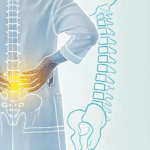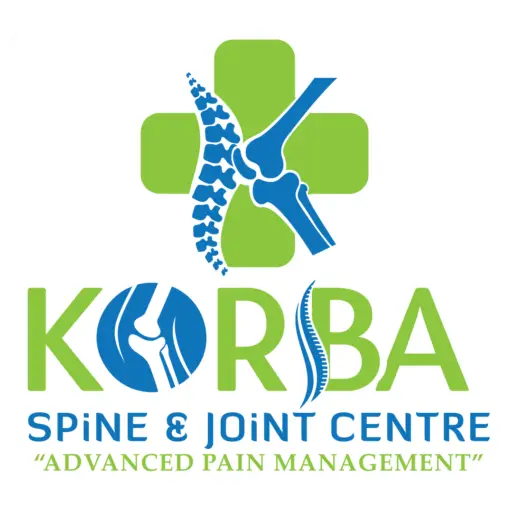
Physiotherapy for Low Back Pain: A Complete Guide to Relief and Prevention
Low back pain is something that most people will experience at least once in their lives. Whether it’s due to lifting something heavy, spending long hours sitting, or simply aging, low back pain can be both frustrating and debilitating. What many people don’t realize, however, is how effective physiotherapy can be in treating and managing this condition.
In this comprehensive guide, we’ll explore the causes of low back pain, common symptoms, and most importantly, how physiotherapy can help relieve pain, restore mobility, and prevent future episodes. Our goal is to provide you with practical information that will empower you to take control of your back health and seek professional help when needed.
What Is Low Back Pain?
Low back pain refers to discomfort, pain, or stiffness in the area of the lower spine, typically between the bottom of your ribs and the top of your hips. It can be short-term (acute) or long-term (chronic), and the severity of the pain can range from mild to excruciating.
The lower back, or lumbar region, supports much of your body’s weight, which makes it vulnerable to stress and injury. This area of the body is also essential for everyday movements such as bending, lifting, and twisting. Because the lower back is so central to your movements, any injury or strain can affect your ability to perform even the most basic tasks.
“Low back pain is one of the most common health complaints, affecting people of all ages and lifestyles. It’s also a leading cause of missed workdays and reduced quality of life.” – Dr. Vivek Arora
Acute vs. Chronic Low Back Pain
Low back pain is generally classified into two types: acute and chronic.
- Acute low back pain is sudden in onset and typically lasts a few days to a few weeks. It is often caused by an injury or strain, and the pain usually resolves once the underlying issue is addressed.
- Chronic low back pain, on the other hand, lasts longer than three months. It can be persistent and may continue even after the initial cause has been treated. Chronic pain often requires a more comprehensive treatment approach, including lifestyle changes and long-term physiotherapy.
Common Causes of Low Back Pain
Low back pain can be caused by a wide range of factors, from everyday activities to underlying medical conditions. Below are some of the most common causes:
1. Muscle or Ligament Strain
One of the most common causes of low back pain is muscle or ligament strain. This can occur when you lift something heavy, twist your body awkwardly, or overexert your muscles during physical activity. Repeated stress on the muscles and ligaments in the lower back can lead to inflammation, pain, and stiffness.
2. Herniated or Bulging Disc
Between each of the bones (vertebrae) in your spine are rubbery cushions called discs. These discs act as shock absorbers, allowing your spine to move flexibly. When a disc becomes damaged or bulges out of its normal position, it can press on nearby nerves, causing pain that radiates from the lower back down into the legs. This condition is often referred to as a herniated disc or slipped disc.
3. Spinal Stenosis
Spinal stenosis is a condition in which the spaces within your spine narrow, putting pressure on the nerves. This can lead to pain, numbness, or weakness in the lower back and legs. Spinal stenosis is more common in older adults due to the wear and tear on the spine that occurs with aging.
4. Degenerative Disc Disease
As we age, the discs in our spine can lose water and become less flexible. This condition, known as degenerative disc disease, can cause the discs to wear down over time, leading to pain and stiffness in the lower back. This is a common cause of chronic low back pain in older adults.
5. Arthritis
Osteoarthritis is a condition that causes the cartilage in your joints to break down, leading to pain and inflammation. When arthritis affects the joints in your spine, it can lead to low back pain, stiffness, and decreased mobility.
6. Poor Posture
Poor posture, whether it’s sitting for long periods with a slouched back or standing with your spine out of alignment, can put undue stress on the muscles and ligaments of the lower back. Over time, this stress can lead to chronic low back pain.
7. Injury or Trauma
Sudden injuries, such as those caused by falls, car accidents, or sports injuries, can damage the muscles, ligaments, or bones in your lower back, leading to acute pain. In some cases, the pain may become chronic if the injury is not properly treated.
8. Pregnancy
Pregnancy can place additional stress on the lower back due to weight gain, hormonal changes, and shifts in posture. Many pregnant women experience low back pain, especially in the later stages of pregnancy.
Symptoms of Low Back Pain
Low back pain can present itself in different ways, depending on the cause and severity. Common symptoms of low back pain include:
- Dull, aching pain in the lower back that may worsen with movement.
- Sharp or stabbing pain that radiates into the legs or buttocks, often associated with a herniated disc or sciatica.
- Stiffness in the lower back, especially after prolonged periods of sitting or standing.
- Muscle spasms or tightness in the lower back.
- Numbness or tingling in the legs or feet, which may indicate nerve involvement.
- Difficulty standing up straight or bending over without pain.
If you experience any of these symptoms, it’s important to seek medical advice, especially if the pain persists for more than a few weeks or is severe.
How Physiotherapy Can Help Low Back Pain
Physiotherapy for low back pain is an evidence-based treatment approach that focuses on reducing pain, improving function, and preventing future episodes. Physiotherapists use a variety of techniques to address both the immediate symptoms and the underlying causes of low back pain.
1. Pain Relief Techniques
A key goal of physiotherapy is to reduce pain and inflammation in the lower back. Physiotherapists may use a combination of the following techniques to provide relief:
- Manual Therapy: This includes hands-on techniques such as massage, joint mobilization, and manipulation to improve mobility, reduce muscle tension, and alleviate pain.
- Heat and Cold Therapy: Heat therapy helps relax tight muscles and improve blood flow, while cold therapy reduces inflammation and numbs sore tissues.
- Ultrasound Therapy: Ultrasound uses sound waves to generate heat deep within the tissues, promoting healing and reducing muscle spasms.
- TENS (Transcutaneous Electrical Nerve Stimulation): TENS therapy uses electrical impulses to block pain signals and stimulate the release of endorphins, the body’s natural pain relievers.
2. Restoring Mobility and Strength
In addition to pain relief, physiotherapy aims to restore movement and strength in the lower back and surrounding muscles. Your physiotherapist will design a personalized exercise program that targets the specific needs of your condition. This program may include:
- Stretching Exercises: Tight muscles in the hips, legs, and lower back can contribute to pain. Stretching exercises help improve flexibility, reduce muscle tension, and restore the normal range of motion in your spine.
- Strengthening Exercises: Strengthening the muscles that support your spine, especially your core (abdominal) muscles, helps stabilize your lower back and reduce the risk of future injury. Common exercises include bridges, planks, and abdominal crunches.
- Posture Training: Poor posture is a leading cause of low back pain. Physiotherapists teach patients how to maintain proper posture during daily activities such as sitting, standing, and lifting. Improving your posture can reduce the strain on your back and prevent pain from returning.
- Balance and Coordination Exercises: In some cases, patients with low back pain may also have balance or coordination issues. Physiotherapists can help improve these skills, which can reduce the risk of falls and other injuries.
3. Preventing Future Episodes of Low Back Pain
Physiotherapy is not only about treating the current episode of pain but also about preventing future problems. Your physiotherapist will work with you to develop strategies that minimize the risk of recurrence. These strategies may include:
- Ergonomic Adjustments: Making adjustments to your work environment, such as using a chair with proper lumbar support or setting up a standing desk, can help reduce the strain on your lower back.
- Lifestyle Changes: Maintaining a healthy weight, staying active, and avoiding prolonged periods of sitting or standing can all contribute to better back health.
- Education and Self-Management: One of the most valuable aspects of physiotherapy is the education patients receive about their condition. By learning how to manage your low back pain at home with exercises and stretches, you can take an active role in your recovery and prevent future flare-ups.
“Physiotherapy for low back pain is more than just pain relief – it’s about empowering patients to take control of their health and prevent pain from coming back.” – Dr. Vivek Arora
What to Expect During a Physiotherapy Session
If you’re new to physiotherapy, you may be wondering what to expect during your treatment sessions. The process typically begins with a thorough assessment by the physiotherapist to determine the cause of your pain and develop an individualized treatment plan.
Assessment
During your initial assessment, the physiotherapist will ask you about your medical history, lifestyle, and any previous injuries or conditions. They will also perform a physical examination, which may include testing your range of motion, posture, muscle strength, and flexibility. If necessary, your physiotherapist may recommend imaging tests such as X-rays or an MRI to get a clearer picture of your condition.
Treatment
After the assessment, your physiotherapist will develop a personalized treatment plan tailored to your specific needs. This plan may include a combination of manual therapy, exercises, and education. Each session typically lasts 30 to 60 minutes, and the number of sessions needed will depend on the severity of your condition and how well you respond to treatment.
When Should You See a Doctor for Low Back Pain?
While most cases of low back pain improve with conservative treatment like physiotherapy, there are times when you should seek medical advice. You should see a doctor if you experience any of the following symptoms:
- Severe pain that doesn’t improve after a few weeks of treatment.
- Pain that radiates down the legs or is accompanied by numbness or tingling.
- Weakness in the legs or difficulty walking.
- Loss of bladder or bowel control (this could be a sign of a serious condition known as cauda equina syndrome, which requires immediate medical attention).
Conclusion
Physiotherapy for low back pain is a highly effective treatment option that can help you find relief, improve your mobility, and prevent future episodes of pain. Whether you’re dealing with acute pain from an injury or chronic discomfort from a long-standing condition, physiotherapy offers a safe, non-invasive solution that targets the root causes of your pain.
If you’re struggling with low back pain, don’t hesitate to seek help. A qualified physiotherapist can guide you through the recovery process and help you get back to living your life pain-free.
Author Bio
Dr. Vivek Arora is a skilled physiotherapist and the founder of Korba Spine & Joint Centre, specializing in the treatment of spine-related conditions such as low back pain and sciatica. With a passion for helping patients recover and maintain pain-free lives, Dr. Arora provides personalized care tailored to each individual’s needs.
